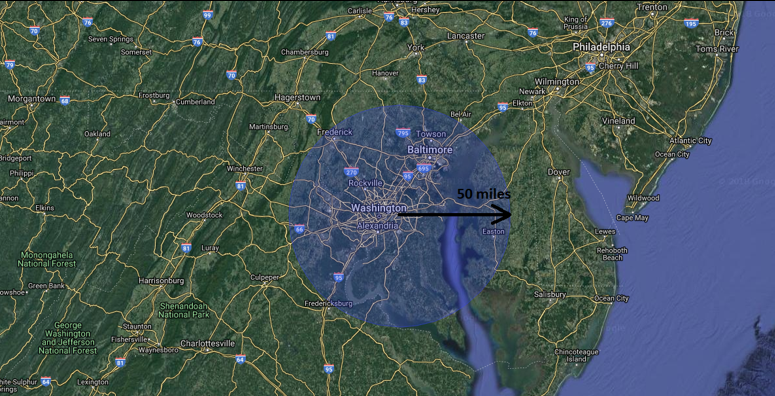Drone Capabilities - Endurance and Range
How Long Can a Drone Fly?
How long an Unmanned Aerial Vehicle can fly is called endurance.
Endurance for an Unmanned Aerial Vehicle can be described at the total time taken during flight. For an electric fixed-wing aircraft or quadrotor this is directly related to the capacity of the battery and the amount of current the motor produces to keep the aircraft in the air. There are many other aircraft parameters that determine the endurance for any aircraft, however for simplicity the endurance calculation will be estimated as shown in the equation below.

The endurance of the aircraft will heavily depend on:
- Aircraft size
- Weight
- Payload weight
For example, a large fixed-wing aircraft with a large wingspan will have a much longer endurance than a small quadrotor. Endurance also will have a factor on the range of the aircraft.
How Far Can a Drone Fly?
How far an Unmanned Aerial Vehicle can travel is called range.
Range of the aircraft is dependent on:
- the amount of current the aircraft is producing
- endurance
- flight speed
- aerodynamic performance
Using math to easily determine the range of a drone- The range calculation for both fixed-wing and quadrotor can be estimated using the equation below.
- The kV value is the number of revolutions per minute the motor will turn when 1V is applied to the motor.
- The “pitch” value is the pitch (in inches) of the propeller on the UAV.
- The endurance value is the amount of time in hours the aircraft can stay in the air.

This equation will allow a rough estimation of the UAV’s total range. To accurately calculate range the following parameters are needed:
- wing area
- weight
- coefficient of lift of the airfoil used on the aircraft
Why Should a Person be Concerned About a Drone's Range or Endurance?
Any entity that is concerned about drone security should be extremely concerned about the endurance and range capabilities of various types of UAV categories.
To further illustrate this, an example using a large fixed-wing electric powered aircraft will be shown. With this example, the demonstration will include an entity concerned with drone security, the range of a possible attack, and the speed at which the attack can occur.
To further setup the scenario, a few parameters are needed for the large fixed-wing so that endurance and range can be simulated. Shown below are the parameters of the “example drone”.
Battery Capacity (Ah) = 20Ah
Current (Amps) during cruise = 10A
Voltage = 14.8v
kV= 1000
Pitch=7”
Using these parameters, endurance, range, and speed can be determined. These values were calculated using a more accurate method of determining speed, endurance, and range.
Endurance = 2 hours
Range = 100 miles
Speed = 50mph
With this, an entity that could be concerned with drone security is a football stadium in a major city. For this example, FedEx field in Washington, DC is selected. However, this example applies to any event, prison, or place of interest.

As shown from the figure, this specific drone can originate from an extremely large area surrounding the event. For this drone to reach the event from the outside ridge of the aircraft’s range and retreat to its original position would take only 2 hours.
This example illustrates why a system designed to detect potential threats is key for any entity focused on protecting itself from the impacts that negatively influenced drones can cause.





.png?width=2030&height=497&name=Background%20(1).png) Airsight is a leading sUAV security software company that specializes in delivering sUAV Airspace Detection Solutions for Critical Infrastructures, Universities, Spectator Sports, Prisons, Events, and more. Our UAV security experts integrate projects of all scopes and sizes nationwide, through a
Airsight is a leading sUAV security software company that specializes in delivering sUAV Airspace Detection Solutions for Critical Infrastructures, Universities, Spectator Sports, Prisons, Events, and more. Our UAV security experts integrate projects of all scopes and sizes nationwide, through a